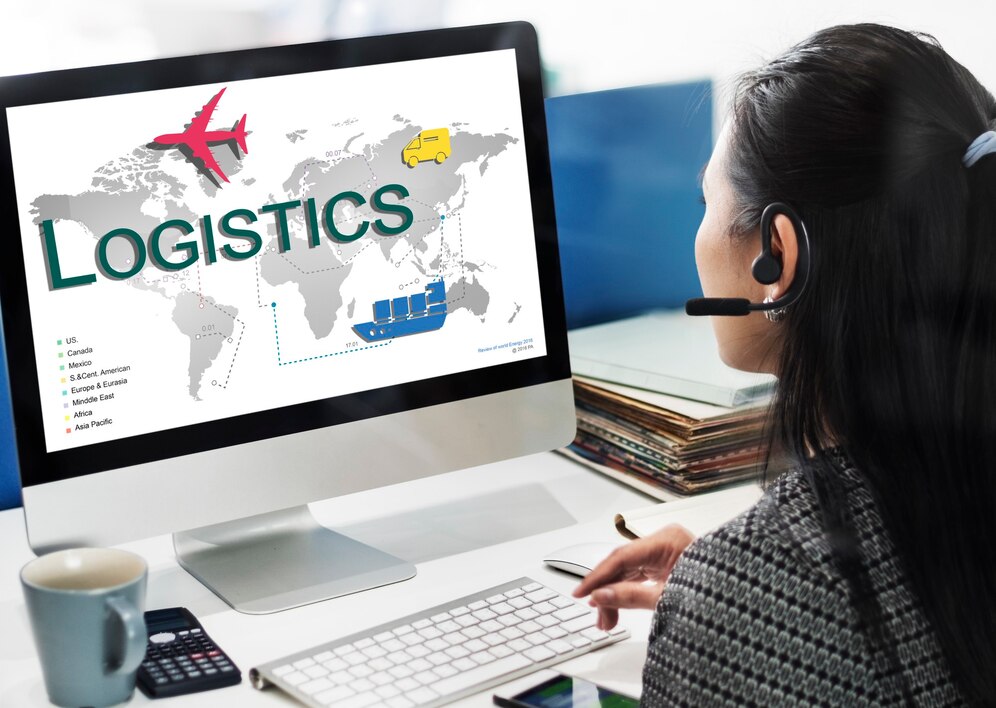How To Transform Your Logistics With A Transport Management System

In today’s rapidly evolving business landscape, the ability to streamline operations and enhance efficiency is not just an advantage—it’s a necessity.
This is especially true in the realm of logistics, where the seamless movement of goods from point A to point B underpins the success of countless enterprises worldwide.
This article serves as a definitive guide for companies looking to transform their logistics through the implementation of a Transport Management System (TMS), from uncovering the essentials of what it can offer to navigating the complexities of its integration into your business operations.
What Is A TMS?
A TMS is a software solution designed to facilitate the planning, execution, and optimization of the physical movement of goods, both incoming and outgoing, and ensure the shipment is compliant and proper documentation is available.
It serves as a central hub for logistics operations, streamlining the entire transportation lifecycle from order planning and execution to delivery tracking and settlement.
At its core, a TMS system for dispatchers integrates various aspects of transportation management, including:
- Carrier Selection: Helping businesses choose the best carrier based on factors like cost, service level, and route efficiency.
- Route Optimization: Calculating the most efficient routes for shipments, considering factors such as distance, fuel consumption, and delivery windows.
- Freight Audit and Payment: Automate the freight audit and payment processes, ensure accuracy in billing, and reduce administrative overhead.
- Shipment Tracking: Providing real-time updates on the status and location of shipments, improving visibility for both businesses and customers.
- Inventory Management: Aligning transportation with inventory levels, reducing carrying costs, and improving order fulfillment rates.
- Analytics and Reporting: Offering insights through data analytics and reporting tools to help businesses make informed decisions and improve their transportation strategies.
Benefits Of Implementing A TMS

Implementing a TMS can significantly transform a business’s logistics operations.
Here are some of the key advantages:
1. Reduced Transportation Costs
A TMS helps businesses minimize their transportation expenses by optimizing route planning, automating carrier selection based on cost and service requirements, and consolidating shipments to maximize load capacity. It also facilitates better negotiation with carriers by providing detailed data on shipping patterns and volumes.
2. Enhanced Visibility
Implementing a TMS offers real-time tracking of shipments and transparency across the entire supply chain. This visibility allows for proactive management of any transportation issues, timely updates to customers about shipment statuses, and more strategic decision-making based on accurate, real-time data.
3. Improved Efficiency And Productivity
By automating many of the manual processes involved in logistics management, a TMS enhances operational efficiency. It streamlines tasks such as order entry, shipment routing, and carrier management, allowing staff to focus on more strategic initiatives and reducing the likelihood of human error.
4. Better Customer Service
With improved visibility and efficiency, companies can provide their customers with more reliable delivery times and faster responses to inquiries. A TMS also enables businesses to offer more flexible shipping options and improve the overall quality of service, leading to higher customer satisfaction and loyalty.
5. Compliance And Documentation
A TMS assists in managing the complex regulatory and documentation requirements associated with shipping and logistics. It can automatically generate necessary shipping documents, ensure compliance with international trade regulations, and help avoid costly penalties and delays.
6. Data Analytics And Reporting
TMS is equipped with analytics and reporting capabilities that provide valuable insights into logistics operations. Companies can use this data to identify trends, monitor performance against key performance indicators (KPIs), and make informed decisions to optimize their supply chain further.
7. Scalability
A TMS can grow with your business, accommodating new transportation modes, additional shipping locations, and expanding product lines. Its scalability ensures that companies can continue to benefit from their TMS investment as they expand and evolve.
8. Environmental Sustainability
By optimizing routes and consolidating shipments, a TMS can reduce the carbon footprint of transportation activities. This not only contributes to environmental sustainability but also aligns with the growing consumer demand for eco-friendly business practices.
A Guide To Implementing A TMS In Your Logistics
Transforming your logistics operations with a TMS involves a strategic approach to selecting, implementing, and leveraging technology to optimize your supply chain. Here’s a step-by-step guide on how to achieve this transformation:
A. Evaluate Your Logistics Needs And Challenges
Start by assessing your current logistics operations to identify inefficiencies, bottlenecks, and areas for improvement. Understand your shipping volumes, patterns, and the complexity of your supply chain. This evaluation will help you define what you need in a TMS to address your specific challenges.
B. Research And Select The Right TMS
With a clear understanding of your needs, research various TMS solutions available in the market. Look for a system that aligns with your business size, industry, and specific logistics requirements. Consider factors such as functionality, scalability, ease of use, integration capabilities, and cost. Engage with vendors, request demos, and gather feedback from existing users to make an informed decision.
C. Plan For Integration And Implementation
Selecting a TMS is just the beginning. Planning its integration into your existing IT infrastructure and logistics operations is critical. This may involve upgrading hardware, training staff, and setting up data exchanges with carriers and suppliers. Develop a detailed implementation plan that includes timelines, responsibilities, and contingency measures to address potential challenges.
D. Customize And Configure The TMS
Work with your chosen vendor to customize and configure the TMS to fit your specific business processes and workflows. This might involve setting up preferred carriers, freight rates, routing guides, and reporting templates. A tailored TMS will be more effective in addressing your unique logistics challenges.
E. Train Your Team
Ensure that your team is well-trained in using the TMS effectively. This includes not just the logistics staff but also sales, customer service, and IT personnel, who will interact with the system in different capacities. Comprehensive training ensures smooth adoption and maximizes the benefits of the TMS.
F. Go Live And Monitor Progress
After testing the TMS in a controlled environment, go live with the system. Monitor the implementation closely to quickly address any issues that arise. Collect feedback from users to identify any gaps in training or functionality.
G. Analyze Data And Optimize Operations
Utilize the data analytics and reporting capabilities of your TMS to gain insights into your logistics operations. Analyze performance metrics, identify trends, and uncover inefficiencies. Use this information to make informed decisions, optimize routes, negotiate better carrier rates, and continuously improve your logistics operations.
H. Scale And Evolve Your TMS
As your business grows and evolves, your logistics needs will change. Regularly review the performance of your TMS and assess its alignment with your business goals. Upgrade and scale your TMS to accommodate new logistics channels, regions, and technologies, ensuring it remains a powerful tool in your logistics strategy.
Conclusion
As companies continue to navigate the complexities of global supply chains, the role of a TMS will only become more critical. Therefore, investing in a TMS is not just a step toward optimizing logistics operations—it’s a strategic move toward building a more agile, resilient, and customer-focused business.
Read Also:


























Leave A Reply